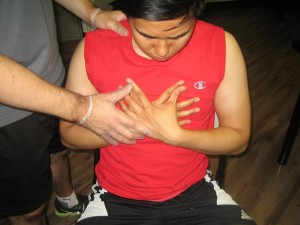The shiitake mushroom is basically a fungus that is packed with potassium, vitamin B and phosphorus. The mushroom is commonly used as an ingredient in Asian dishes and the extract of the mushroom is often utilized in the creation of medications for treating high cholesterol. Even though shiitake mushrooms are highly beneficial, some develop an allergic reaction. An allergy to shiitake mushroom or shiitake dermatitis is not usually life-threatening, but the signs and symptoms can cause a lot of discomfort and even debilitating in nature.
What are the usual culprits?
A toxic reaction in which the immune system is not involved usually occurs once the body develops an adverse reaction to lentinan which is a starch-like constituent present in shiitake mushrooms. Lentinan can trigger the dilation of the blood vessels and generate inflammatory compounds beneath the skin that triggers the signs and symptoms of an allergic response.
It is important to note that this reaction typically develops once the mushrooms are only partially cooked or eaten raw. The symptoms can also be triggered by sensitivity to salicylates which are chemicals present in plants. Additionally, the individual can also experience an allergic reaction to shiitake mushrooms if he/she is allergic to fungus or mold.
What are the symptoms?

When a toxic reaction to shiitake mushrooms occurs, the symptoms are similar to an allergic reaction which includes red-colored rashes that are tender to the touch. Small-sized, painful blisters can develop over the rash. Aside from the rashes, the individual can also develop skin itchiness, head pain, facial swelling, nausea, stomach discomfort, swelling of the hands and feet, nasal congestion, low blood pressure and asthma-like symptoms such as wheezing and breathing difficulty.
Consulting a doctor
It is best to consult a doctor if you suspect that the individual is allergic to shiitake mushrooms. The doctor will perform an allergy test in order to determine if shiitake mushrooms are the cause of the symptoms. With the approval of the doctor, the individual can take antihistamines to relieve the general symptoms and discomfort. The doctor can also prescribe an oral or topical steroid to relieve symptoms such as rashes and itchiness. The best way to prevent future allergic reactions is to instruct the individual to avoid handling, inhaling or eating shiitake mushrooms or any products that might contain lentinan or salicylates.
What to do for a severe reaction to shiitake mushroom?
In severe cases, an allergic response to shiitake mushroom can lead to anaphylaxis which is a life-threatening condition. The symptoms of anaphylaxis include an abrupt drop in the blood pressure, breathing difficulty, wheezing, loss of consciousness and organ failure. It is important to call for emergency assistance if the individual experience anaphylaxis after eating shiitake mushrooms. If the individual is diagnosed with severe food allergy to shiitake mushrooms, the doctor will prescribe an injectable epinephrine or EpiPen that must be on-hand at all times. If you want to learn how to use an EpiPen, click here.
